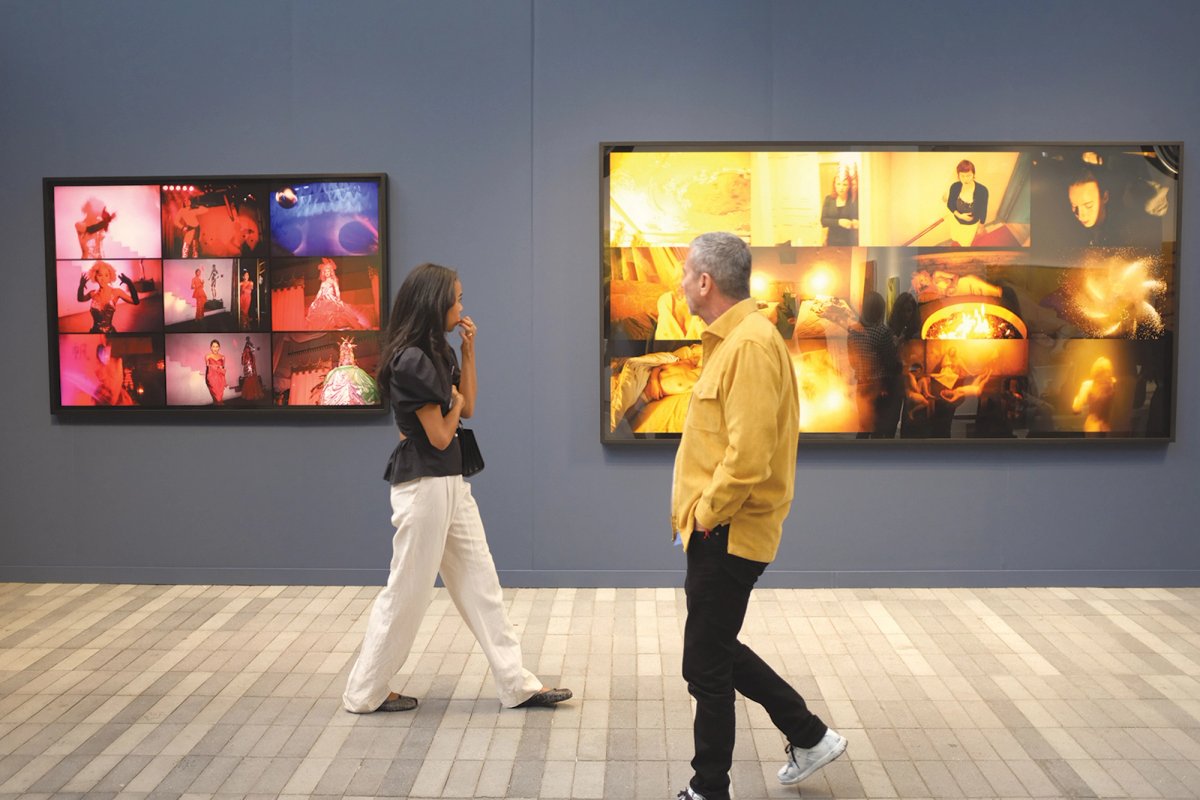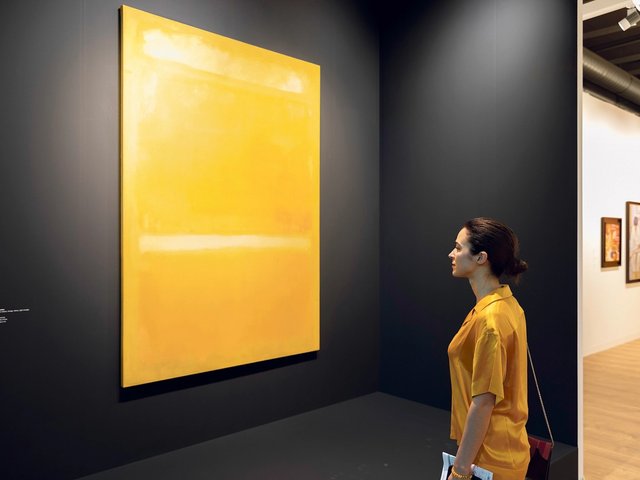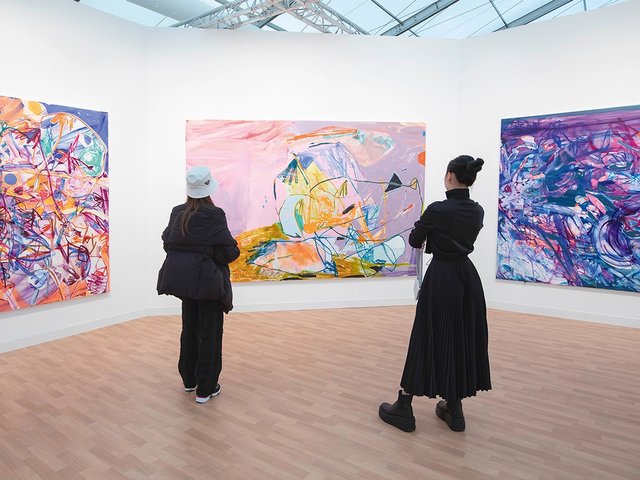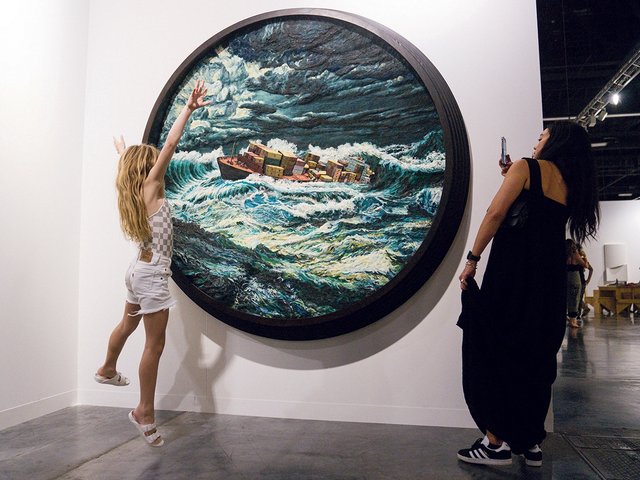The art market is shifting into a new phase. Some describe it as “cooling”, while some are talking of a “slowdown”. Others say we are simply “moving away from the frenzy of the past few years”.
Andrew Fabricant, Gagosian’s chief operating officer, thinks the changes have been slight—so far. “There’s not been a wholesale correction, there have been subtle shifts in pricing,” he says. “The art market is not immune from the vicissitudes of the real world, but the effects are delayed. It remains to be seen how this will play out.”
Earlier this month, the US central bank raised interest rates to the highest level in 16 years. “High interest rates have definitely contributed to a cooler market—money is expensive and people are not speculating,” says Josh Baer, writing of the New York auctions in the Baer Faxt newsletter this week. Other real-world concerns impacting the art industry include a declining real estate market. As Jessica Kreps, a partner at Lehmann Maupin, puts it: “Fewer people are buying homes, and there’s less need to fill those homes with art. There’s a diminished appetite to buy. That said, collectors are more discerning about what they want; there will always be a market for quality.”
Another bellwether that the boom is well and truly over is the news that one of the art world’s top advisers, Lisa Schiff, is being sued by clients alleging she has been running a “Ponzi scheme”. Such scams typically proliferate in fatter times and are often exposed when the bubble bursts. Schiff, whose previous clients include actor Leonardo DiCaprio, now faces two lawsuits that allege she defrauded collectors in sales of art worth millions of dollars, including an Adrian Ghenie painting sold for $2.5m at Sotheby’s, which had been co-purchased by collectors Candace Carmel Barasch and Richard Grossman.
Instead of paying galleries and other businesses, Schiff allegedly used the money to fund her “lavish lifestyle” as well as “purchase artworks for other clients”, according to court papers. Schiff abruptly shut her business this week as the crisis has deepened, though she has declined to comment to the press.
Focused stands stand out
At Frieze New York, booths dedicated to one or two artists are proving popular among dealers who are perhaps more interested in making a splash than racking up multiple sales. Even the mega galleries are pitching their offerings modestly this week. Gagosian is showing new work by the latest addition to the gallery’s roster, Nan Goldin, who has garnered attention for her activism in recent years but whose market has lagged behind. A spokesperson says the gallery has sold “a significant number” of grids and individual photographs, priced between $64,000 and $90,000, to private collectors and museums, “indicative of the ongoing excitement and respect for Nan Goldin’s work”.
Stephen Friedman has also opted for a solo booth, which features new works by the abstract painter Pam Glick, who joined the gallery in March. Five paintings sold on the opening day for $55,000 each to clients based in New York and abroad. One sold to a corporate collection. Mira Dimitrova, the director of sales at the gallery, says business at the fair “has started very promisingly”. She adds: “The heat may have cooled slightly but that’s no bad thing and on balance the market feels stable.”
Pace reported selling out its booth of paintings and works on paper by the fast-rising New York artist Robert Nava—11 were pre-sold and four sold on the opening day. Going for between $30,000 and $80,000, the prices are a fraction of Nava’s auction prices, which routinely hit the $500,000 mark.
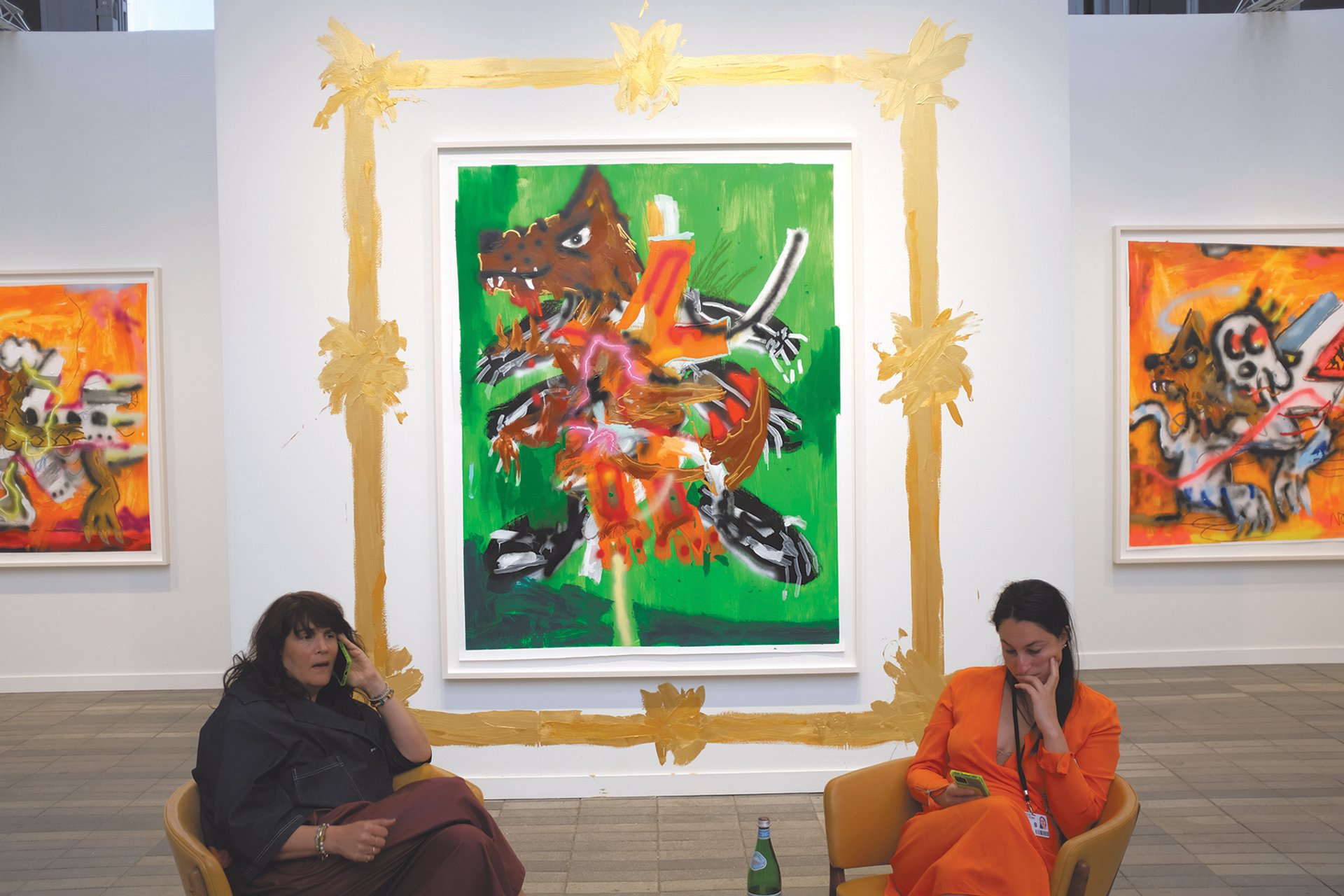
Pace sold out its stand of Robert Nava’s paintings and works on paper
Photo: Alex Wroblewski
But, as new buyers retreat and the froth comes off the top of the market for ultra-contemporary art, prices are beginning to fall at auction. With that, calls are growing for galleries that have raised prices in line with auction results to cut them too.
“Galleries will have to adjust pricing, that shouldn’t be an anomaly. That’s a correction that’s long overdue, especially for works that are dated 2021 or 2022,” Fabricant says. “That’s wholesale speculation—the attitude of ‘I want to wake up rich tomorrow’—and I would like to see a moderation of that behaviour.”
Galleries at all levels appear to be feeling the pinch, though accessible price points are keeping the wheels turning at Frieze. At Canada, four out of five paintings by Elizabeth McIntosh, priced $25,000 to $32,000, sold on the opening day. The gallery’s sales director Andrew Lee says: “We have all experienced a shift. When you get calls and texts from other dealers asking ‘how’s business for you?’ you know something’s up.”
Few galleries noted sales over the $1m mark. Hauser & Wirth reported selling “numerous” works from its solo stand devoted to the late Jack Whitten, ranging in price from $95,000 to $2.5m. Thaddaeus Ropac says he sold ten works on the opening day, with the most expensive, by Robert Rauschenberg, topping out at nearly €2m. The Austrian dealer disagrees that the market is softening, though he says “surprisingly few Europeans” are in town.
Secondary market stumbles
Auctions represent another area of activity, and the results have been mixed this week. Here too, prices are down; there have been no works with nine-figure estimates, or even estimates in the high eights. “There isn’t the allure of a marquee sale to command attention,” Fabricant says.
The big question is whether there is enough demand to absorb all of the material. Among those to cut through the noise were a small Ed Ruscha painting with a big estimate, which sold on one bid for $22.3m during Christie’s 20th century sale. The other prize lot of the week was a large Jean-Michel Basquiat painting from 1983 that racked up $67m with fees in Christie’s 21st century auction—more than half of the whole sale’s total ($98.7m). Just two bidders, one of them Larry Gagosian, drove the price up.
While that auction was 96% sold by lot, several others have hovered around the 80% sell-through rate, suggesting the auction houses are realistic about lowering their standards. Pre-sale nerves appear to have got the better of consignors to Sotheby’s Modern art sale, which saw six lots withdrawn at the last minute.
Nonetheless, more than $2bn worth of art was expected to be sold over the two-week auction jamboree and there are plenty of signs of life elsewhere in New York. The French dealer Daniel Templon launched a space here last October, followed by the Mexico City powerhouse Kurimanzutto, which opened in November. Both are located in Chelsea. After ten years of discussion, White Cube is opening in a former bank on Madison Avenue is September, while Stephen Friedman will open in Tribeca this autumn.
With the number of galleries mushrooming, there are rumours that Frieze is now looking at other venues in the city to accommodate more exhibitors—and more income. This year the fair boasts its biggest lineup since moving to the Shed, with 68 galleries—though still a snip compared with the 190-plus which used to participate when Frieze pitched its tent on Randall’s Island.
A spokesperson for the fair says “it is too early for us to comment on future plans”, and The Art Newspaper understands that another three-year contract with the Shed has recently been signed, so any move is far from imminent. But with the market facing more and more uncertainties, the biggest changes could be yet to come.
• Listen to more from New York Frieze Week on the The Week in Art podcast here


